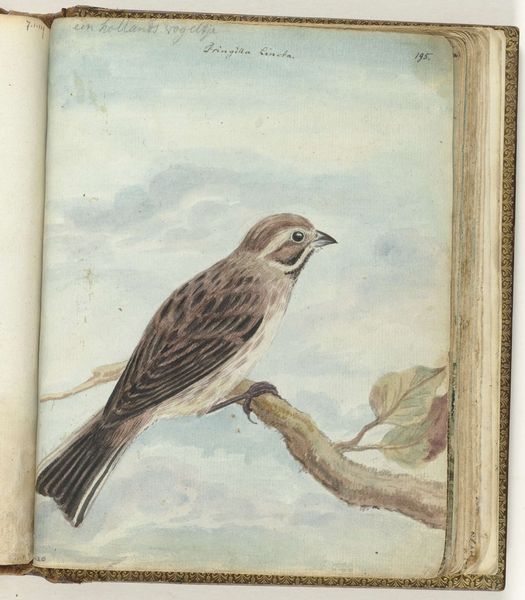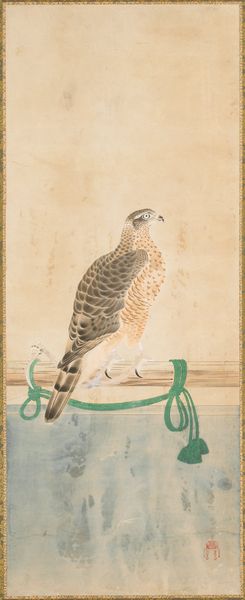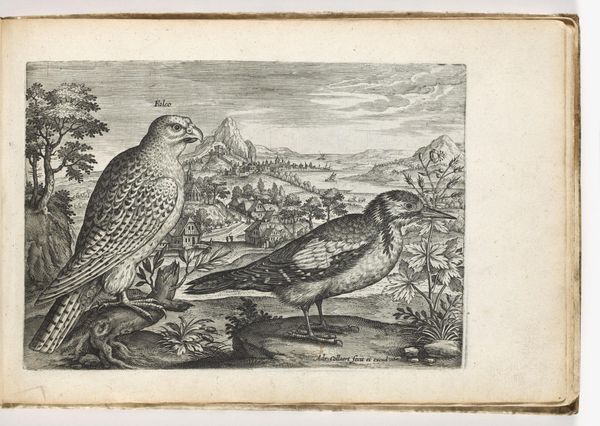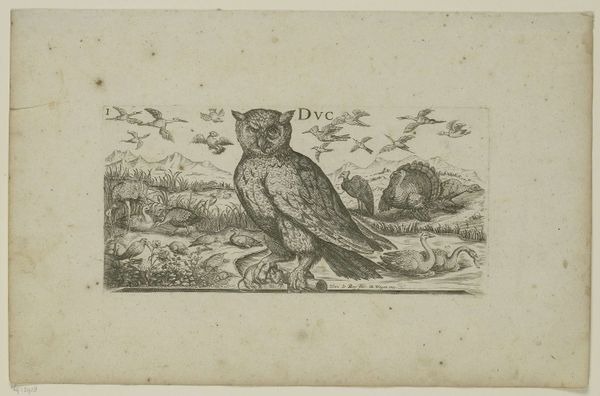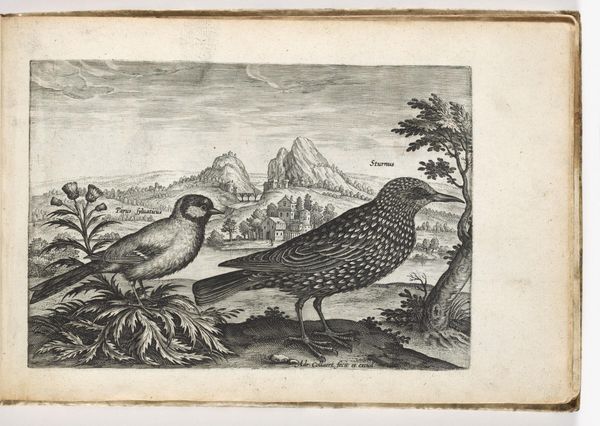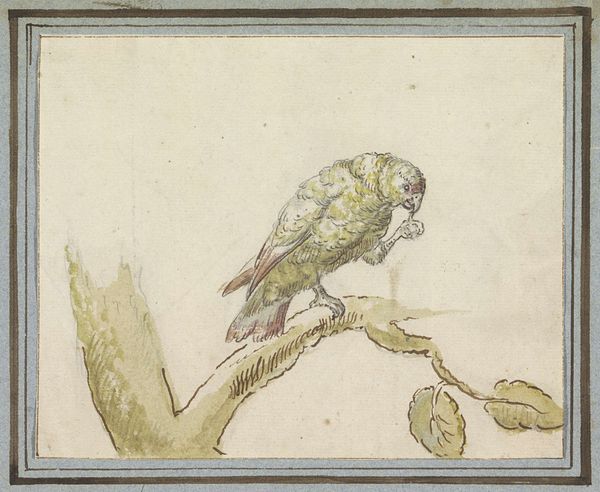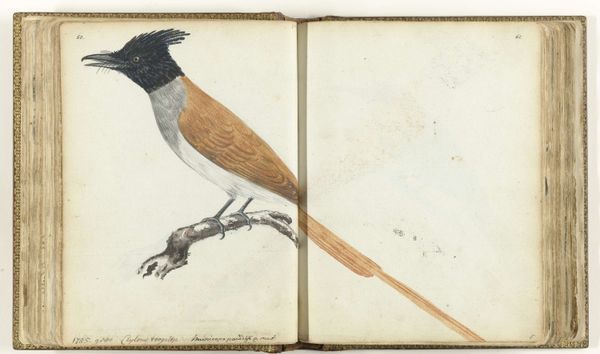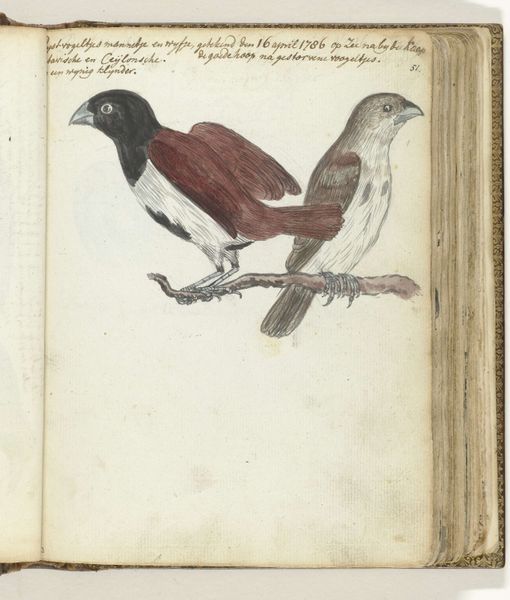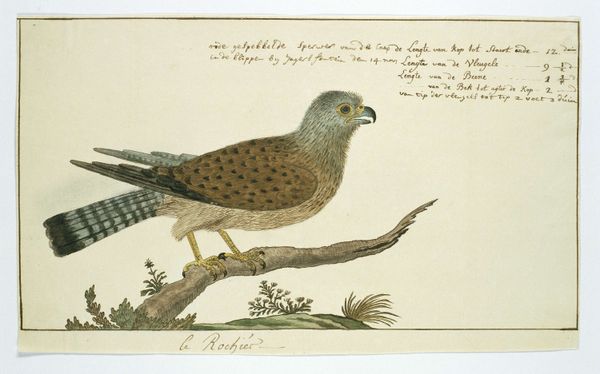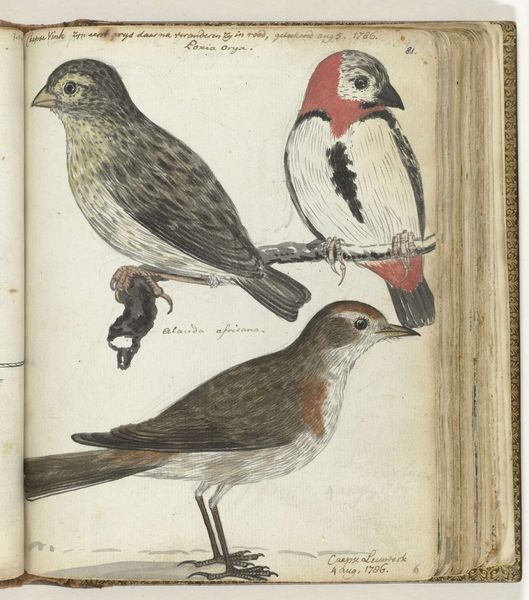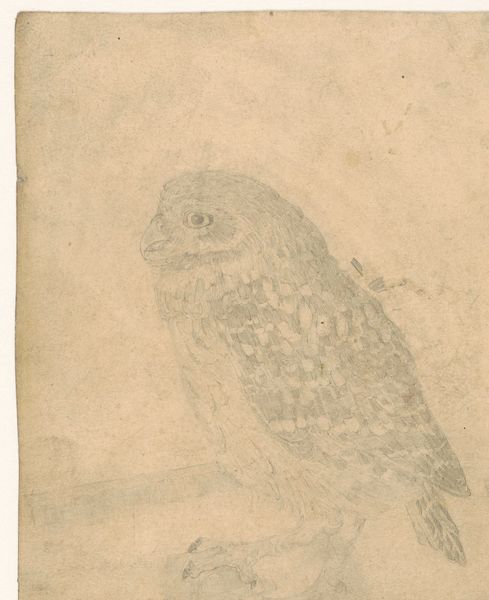
drawing, watercolor, pencil
#
drawing
#
water colours
#
animal
#
landscape
#
figuration
#
watercolor
#
coloured pencil
#
pencil
#
watercolor
Dimensions: height 195 mm, width 155 mm
Copyright: Rijks Museum: Open Domain
Curator: Let's examine this watercolor and pencil drawing, "Hollandse koekoek," attributed to Jan Brandes, likely created between 1770 and 1787. Editor: It's striking how delicately the colors are applied; they give the cuckoo a kind of fragile stillness. The choice of media emphasizes the delicate details of the feathers. Curator: Indeed. These natural history drawings served scientific and often colonial purposes. Brandes, a clergyman with the Dutch East India Company, traveled extensively. This bird representation reveals colonial power through the act of observation, documentation, and, ultimately, appropriation. Editor: I'm drawn to the materiality of the page itself – you can see it's part of a larger bound volume. And the precise, almost painstaking, rendering suggests a meticulous process of both observing and making, highlighting labor-intensive creation. What sort of pencils or pigment mixtures did Brandes likely employ during this era? What can those ingredients tell us about the larger trade network of materials and influence during this period? Curator: The precision served to create objective visual records for a European audience, reinforcing a sense of control over the natural world. The artistic license evident, even in this representational work, also highlights the constructed nature of even seemingly objective illustrations, tailored for European consumption and knowledge systems. Editor: Absolutely, because this wasn't just art, but data collection for colonial aspirations. One also cannot ignore the binding and book itself. Were these drawings displayed publicly or treated as personal, private journals for elite members of Dutch society? The function shifts how we understand Brandes intentions here. Curator: Understanding the context, we can view Brandes' art as a product of his time, embedded within socio-political structures of colonial expansion and scientific development. Editor: Thinking about Brandes labor brings it all into sharper relief: What was his daily life like? Where did his materials come from? Even now, our engagement and discussion add layers to its long material journey through time.
Comments
No comments
Be the first to comment and join the conversation on the ultimate creative platform.
